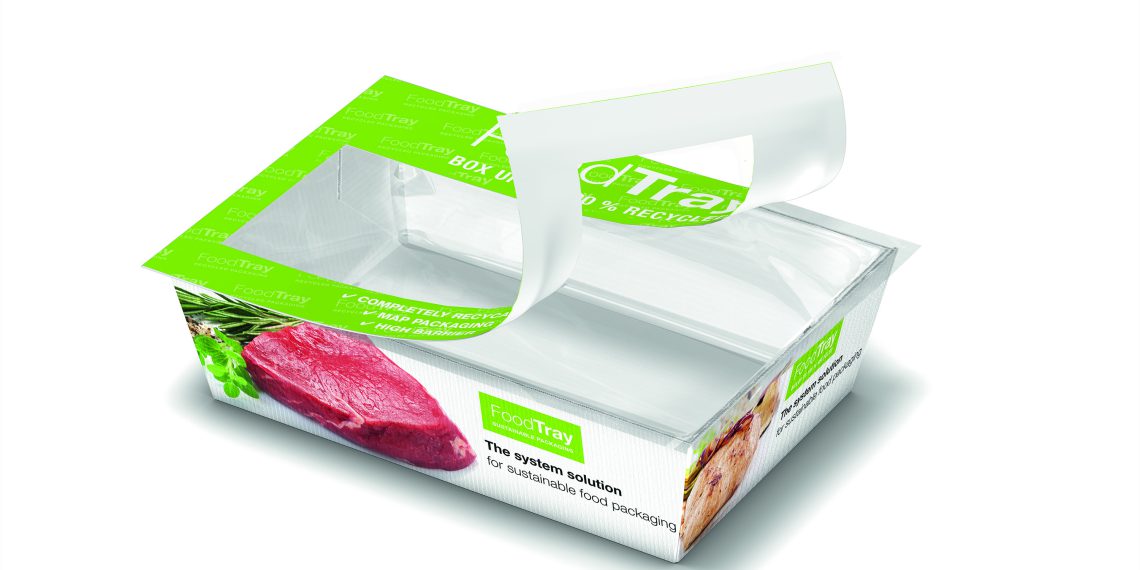Gea presented a new combined solution for sustainable food packaging at IFFA 2019 in Frankfurt. The new packaging law, which came into force in Germany on January 1, 2019, requires significantly higher recycling rates for plastic packaging and will have far-reaching consequences for industry. Together with partner companies, Gea developed an ecological carton/film composite solution, known as FoodTray. The two components, which are assembled on a Gea thermoforming packaging machine, can be easily separated later by the consumer in a single motion.
Supplying a growing world population with fresh food only works with the support of safe and secure packaging. The challenge is the consumption of resources, which is constantly rising and yet must be minimized. The German packaging law stipulates recycling quotas which, for example, requires 63 percent for plastics by 2022. “The question is what the packaging industry can do to meet these requirements and how it can ultimately replace plastic,” says Hans-Günter Donges, who is responsible for overarching developments in process technology at Gea.
Bundled know-how for greater efficiency and sustainability
As a result, food manufacturers are making challenging demands on machine technology. The company has offered a proven alternative to pure plastic packaging for years with a carton/film composite solution, which has now been further adapted to market requirements and guarantees maximum flexibility. Initially, the concept focused on creating a tray from corrugated board that could also meet the requirements of modern food packaging. Thanks to the cooperation with diverse specialists from the corrugated cardboard, film and mechanical engineering sectors, including the Roba Group, Schur Flexibles Germany and Van de Velde Packaging, the requirements could now be met. FoodTray is a system packaging that combines the criteria of product claim, haptics, safety, sustainability and industrial production processes.
Composite packaging solution, yet still separable
FoodTray is a packaging solution made from the basic materials: corrugated cardboard and film. Corrugated cardboard is the most widely used packaging material worldwide and is made almost entirely of natural raw or recycled material. The film provides an outstanding barrier, helping extend food shelf life.
The FoodTray system consists of corrugated cardboard carton with film on the inside, combining the advantages of both cardboard and plastic. “We’ve reduced film content by up to 70 percent,” explains Donges. “At FoodTray, fossil-based raw materials are replaced with fibers from renewable raw materials; the recycled content is more than 80 percent. At the same time, we make no compromises in terms of stability. Likewise, the cardboard and film can be easily separated and recycled by the consumer.”
The film is thermoformed and sealed directly to the inside of the corrugated cardboard box. After this, the customerspecific packaging process can take place. “The investment costs are low and the result is ecologically sustainable packaging,” summarizes Donges. MAP packaging heights range from 20 to 60 mm and skin versions up to 20 mm, with corrugated cardboard used on the outer box.
The brand information can be printed over the entire surface, enables high-quality product presentation and meets increasing product labeling demands. Likewise, companies have the opportunity to demonstrate their commitment to using resources more mindfully by investing in this sustainable solution. “At our production site in Wallau, Germany, we have put a sample system into operation where diverse customer-specific solutions can be tested,” concludes Donges invitingly.

















